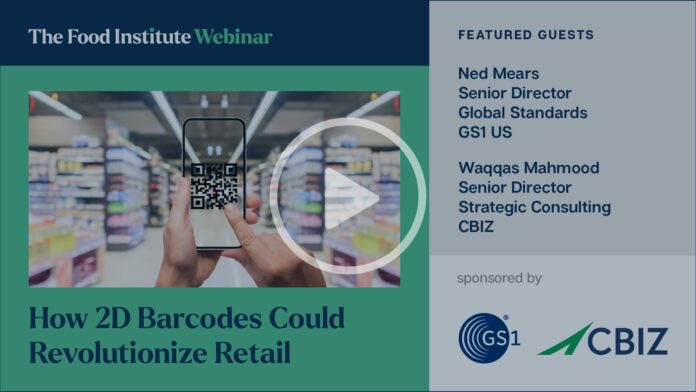The Rise of 2D Barcodes in the Food and Beverage Industry: A Game-Changer for Product Identification
In the ever-evolving landscape of the food and beverage industry, staying ahead of the curve is crucial for manufacturers, retailers, and tech providers alike. One trend that is gaining momentum and poised to revolutionize how products are identified and tracked is the adoption of 2D barcodes. In a recent on-demand webinar hosted by GS1 US and CBIZ, industry experts delved into the potential of 2D barcodes to transform the retail and foodservice sectors.
Why 2D Barcodes are the Future of Product Identification
- Enhanced Data Transparency: 2D barcodes offer the capability to store significantly more data than traditional UPC barcodes, providing consumers with access to detailed product information such as ingredients, allergens, and sourcing.
- Improved Traceability: With the ability to encode unique identifiers for each product, 2D barcodes enable enhanced traceability throughout the supply chain, allowing for quicker recalls and better quality control.
- Streamlined Inventory Management: By leveraging 2D barcodes for inventory tracking, manufacturers and retailers can optimize their operations, reduce errors, and improve overall efficiency.
Key Insights from Industry Leaders
During the webinar, experts from CBIZ highlighted the importance of leveraging 2D barcodes to drive innovation and efficiency in the food and beverage industry. They emphasized the need for businesses to adapt to new technologies to meet the evolving demands of consumers and regulatory requirements.
GS1 US, a global data standards organization, underscored the role of 2D barcodes in powering supply chains and ensuring trust and authenticity in product information. They emphasized the importance of adopting standardized data formats to enable seamless communication between trading partners and enhance visibility across the supply chain.
Looking Ahead: The Future of 2D Barcodes in the Food and Beverage Industry
As the adoption of 2D barcodes continues to gain momentum, it is essential for food and beverage professionals to stay informed and prepared for the transformative impact of this technology. Key considerations for industry stakeholders include:
- Investing in Technology: Manufacturers and retailers should prioritize investments in 2D barcode scanning equipment and software to unlock the full potential of this technology.
- Collaborating with Partners: Building strong partnerships with technology providers and industry organizations like GS1 US can help businesses navigate the complexities of implementing 2D barcodes effectively.
- Educating Consumers: Communicating the benefits of 2D barcodes to consumers, such as improved transparency and traceability, can enhance brand trust and loyalty.
Industry Analysis: Implications for the Global Food and Beverage Industry
The widespread adoption of 2D barcodes in the food and beverage industry is poised to have far-reaching implications for supply chains, pricing dynamics, and trade relationships. Key factors to consider include:
- Supply Chains: 2D barcodes have the potential to streamline supply chain operations, reduce waste, and enhance product traceability, leading to improved efficiency and cost savings.
- Pricing: The implementation of 2D barcodes may require upfront investments in technology and training, but the long-term benefits in terms of improved data accuracy and consumer trust can outweigh these costs.
- Trade Dynamics: As more countries and regions adopt 2D barcode standards, harmonizing data formats and communication protocols will be essential to facilitate global trade and ensure seamless interoperability.
In conclusion, the rise of 2D barcodes in the food and beverage industry represents a significant opportunity for businesses to enhance transparency, traceability, and efficiency in their operations. By embracing this technology and collaborating with industry partners, food and beverage professionals can position themselves for success in an increasingly digital and data-driven marketplace.




